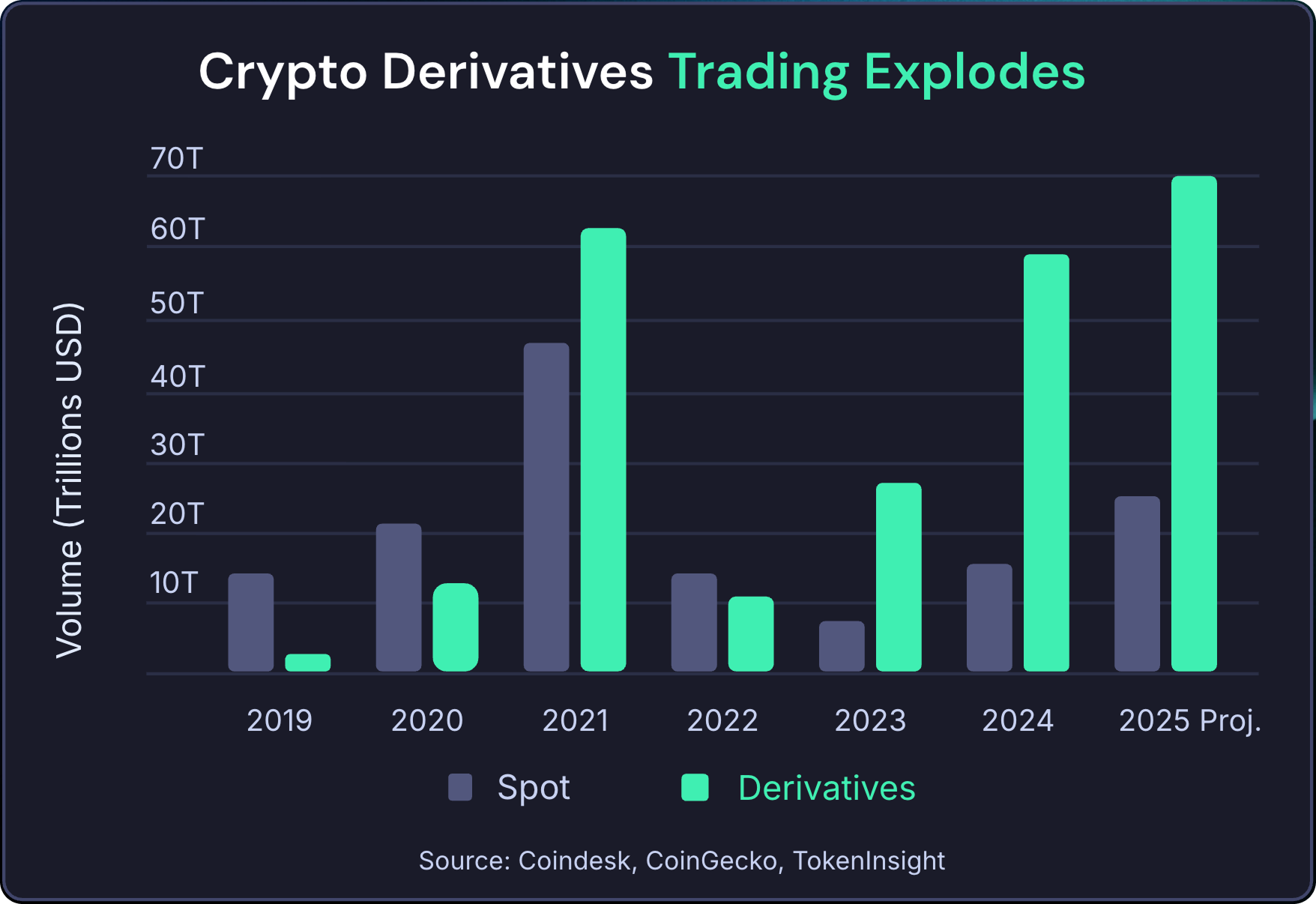Summarize with AI:
Why Derivatives Will Define the Next Decade of Retail Trading
Retail trading is entering a new phase. As institutional inflows rise, ETF adoption accelerates, and volatility returns, derivatives are becoming the center of gravity for crypto markets. They offer precision, leverage, and continuous access, the tools traders now expect. For brokers, this shift opens the next decade’s biggest growth channel.
Why Derivatives Are the Next Growth Channel for Brokers
“You are seeing the biggest names get into the space. All of them are adding derivatives. The biggest names, Binance, Coinbase, Kraken, have either recently decided to offer [perpetuals] or already do. That is a sign. The smartest money in the space is focusing on this.”
– Ian, Co-Founder & CEO of Shift Markets
That signal is playing out at the product level. Retail traders want tools to amplify views, hedge risk, and earn yield in any market. Perpetual futures and margin products deliver long and short exposure, flexible collateral, and 24 hour markets. As a result, active traders are moving from buy and hold toward systematic, derivatives-led strategies. For brokers, meeting that demand means adding perpetuals and margin inside a single stack that handles risk, collateral, and compliance with the same reliability clients expect from spot. The firms that make this shift now will capture the next wave of volume and keep high value customers on platform.
The Crypto Derivatives Boom
Derivatives volume now dominates crypto trading, accounting for more than 75% of total exchange volume in 2025. Active traders are concentrating where liquidity is deepest, and brokers that follow this flow gain share. Businesses now hold about 6.2% of Bitcoin supply, roughly 1.3 million BTC, with 12.5 billion dollars in inflows through August 2025. That capital tightens spreads and stabilizes funding. At the same time, custody is maturing. Only about 8% of firms fully self custody, and most use qualified third party or hybrid models. The result is predictable collateral, cleaner audits, and a stronger foundation where derivatives thrive.
Volume Without Resilience Fails
Derivatives drive activity, but weak operations raise default risk. A 2025 study of 845 centralized exchanges found higher failure likelihood with limited listings, high fees, unrestricted U.S. access, and low user ratings. Exchanges in high transparency index countries also showed elevated risk.
A broader product range spreads risk and attracts steadier flow. Competitive, transparent fees build trust and keep volume on the platform. Clear market access policies limit regulatory exposure. Most importantly, strong client experience drives longevity: reliable support, stable uptime, and consistent communication all influence survival. Derivatives growth only matters when the foundation can handle the pressure.
What Institutional Custody Looks Like in Practice
Derivatives platforms live or die by collateral control. Strong custody turns growth into a repeatable engine while weak controls turn it into operational risk. Here are five essentials for custody that scales.
Wallet Architecture That Matches Risk
Use cold storage for bulk reserves and hot wallets for on-venue liquidity. Secure keys with multi-signature, HSM, or MPC to remove single points of failure. Treat Custody As Product: design for speed and assurance. Collateral should move efficiently while staying provably segregated and auditable so treasury, risk, and compliance operate without friction.
Controls, Audits, And Proof
Back the stack with SOC 1 Type II and SOC 2 Type II, insurance coverage, client asset segregation, withdrawal whitelists, time locks, and role-based access. Proof Of Reserves Builds Confidence: implement PoR with credible controls to show how margin is secured. Clear, repeatable attestations raise confidence for institutions and retail traders, especially during volatility.
Hybrid Custody In Practice
Most firms use third-party or hybrid custody. It standardizes collateral flows, shortens funding cycles, and reduces operational surprises for brokers and traders.
What Winning Looks Like for Brokers
The next decade will belong to brokers who act early. With institutional inflows accelerating and custody standards rising, derivatives will define market share and client loyalty. Choose partners with audited controls, insurance, and disciplined balance management. Offer diverse products, transparent fees, and clear access policies. Invest in client service because user trust drives platform longevity.
You bring the brand and clients. We deliver derivatives infrastructure, liquidity, custody workflows, and compliance tools that speed up go to market and keep operations predictable. If you’re ready to launch derivatives, connect with our team.
Share this article:
Want to learn more?
Let us save you time by walking you through what Shift can do for your business!




